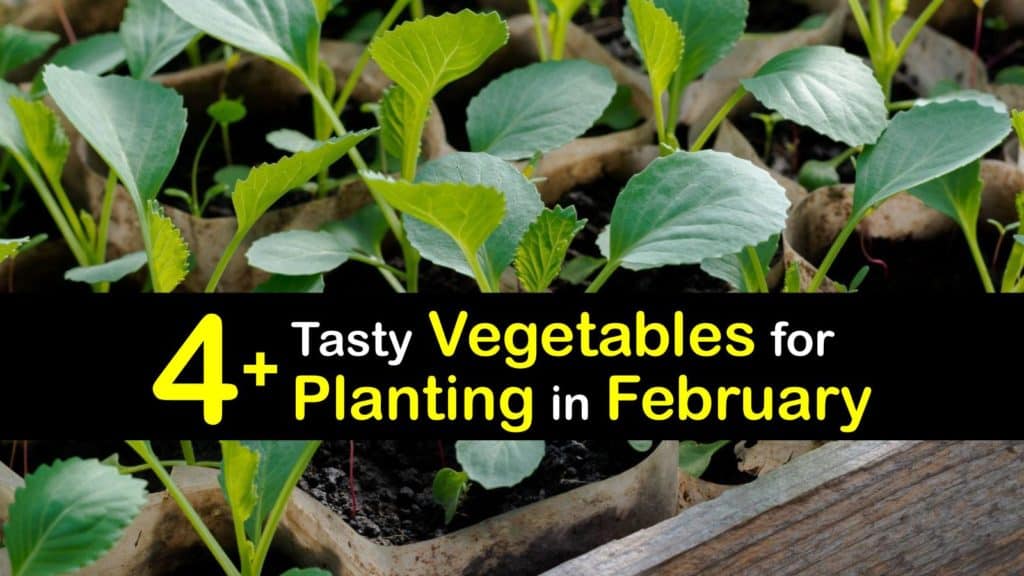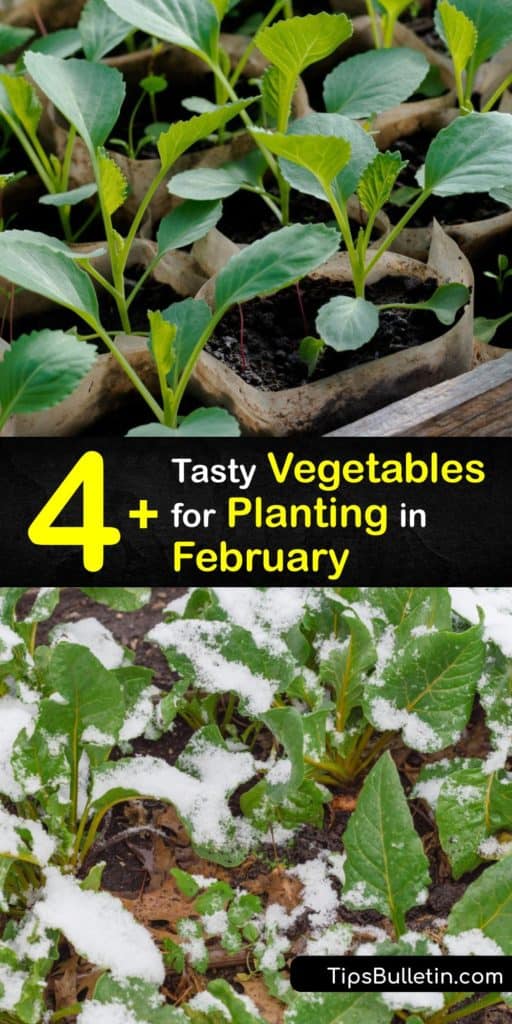The holidays are over, you grow weary of the short days and long winter nights, and you’re eager to begin your spring planting of snapdragons, dahlias, pansies, begonias, dianthus, impatiens, petunias, calendula flowers, and vegetables. However, the month of February has only just begun, and you fear it is too soon to start a vegetable garden. While it seems impossible, there are many vegetables to plant in February.
February is the time of year when winter has worn out its welcome, and we begin to get antsy for the coming spring. Unfortunately, it’s also the most unpredictable month since the weather changes from day to day, depending on where you live. While this uncertainty makes gardening a challenge, it is possible to plant some veggies if you know which ones to grow.
The key to late winter or early spring planting is starting seeds indoors or planting them in a cold frame in mild weather regions. However, it’s vital to understand the differences between warm-season and cool-season crops to ensure you grow your garden accordingly.

Planting a February Vegetable Garden
While planting veggies in February takes a bit of know-how, it is possible to produce a crop free of pesticides at the end of the growing season if you choose suitable vegetables. Learn which veggies are cool-season crops, how to start seeds indoors, and grow them directly in the garden.
If you live in a warm climate, like in zones 9-11, the best time to plant watermelon seeds indoors, as well as a host of other fruits and veggies, is in February or March. Getting a head start on the growing season can increase yields.
What Vegetables to Plant in February
Many crops enjoy growing during cool temperatures. However, not all areas are suitable for producing a February garden. You may also need to explore vegetables to plant in March if February is a little too cold for your chosen plants.
Discover what vegetables to plant in February based on your region.

February Planting
What can be planted in February in the USA? If you live in the North, East, or Midwest, sow cabbage, celery, cauliflower, radish, tomato, oregano, and pepper seeds indoors.
Later in the month, when you can work the ground, set out onion sets, horseradish, asparagus roots, rhubarb, and early potatoes, and lift over-winter parsnips.
If you live in a Southern region, work beets, start broccoli seeds, leeks, cabbage, black-eyed peas, Nantes carrots, cauliflower, chard, endive, kale and collard greens, potato tubers, radishes, spinach, and turnips directly into the garden.
Growing asparagus from seedlings is faster than starting them from seed. Start warm-weather crops like cantaloupe and watermelon indoors.
For Southwest regions, grow perennial vegetables like asparagus and artichoke plants early in the month while the roots are still dormant, followed by beets, broccoli, carrots, onion sets, leaf lettuce, and the different types of kale plants in the middle of the month, and pole, bush, and broad beans at the end of the month.
If you live in the Northwest, sow onion seeds and early potatoes, and plant carrots early in the month and start cool-weather crops like shallots, Swiss chard, Brussels sprouts, and chives the third week of the month.
Vegetables to Grow in February Indoors
One of the simplest ways to grow plants when the outside temperatures are still chilly is to start them inside before the last frost date to give them a head start on the season. Here are the vegetables to grow in February and how to plant them from seeds indoors.
There are many different seeds to plant in February indoors. However, it’s vital to check the seed packets to determine the number of days they take from sowing to germination.
If you reside in a cold region, start hardy seeds like beets, celeriac and turnips indoors seven weeks before the last frost and warm-weather seeds like peppers and tomatoes twelve weeks or more before the final frost date.
When planting beet seeds or other strong seed types, fill seed starting trays with potting soil and sow the seeds according to the seed packet depth requirements. Spray the dirt lightly to moisten it without making it too wet, and keep them in a warm area of your home to encourage germination.
After they sprout, move them to a sunny windowsill or beneath a grow light, and do not let the dirt dry out as the seedlings emerge.
Vegetables to Plant in February Outside
While starting seeds indoors is ideal, there are various outdoor veggies to plant in February, whether you live in a warm region or grow them in a cold frame. Here are the best veggies to plant directly in an outdoor garden or cold frame.
Starting a garden in February is a great way to get a head start on your vegetable growing but it’s not the best time to plant cantaloupe plants unless you live in a warm hardiness zone. However, not all plants tolerate cold temperatures. If you live in a mild-winter area, sow cool-weather spring crops in a cold frame.
These include broccoli, beets, cabbage, cauliflower, celery, lettuce, onions, parsley, and salad greens. To harden off seedlings that you start indoors, transfer them to a cold frame or under cloches in the garden.
Preparing for Your February Garden
Now that you’ve learned what vegetables to plant in February, it’s time to perform garden maintenance. Follow some garden prepping and planting tips to ensure you get the healthiest crop at the end of the growing season.
Start by inspecting the mulch around your perennial veggies and fruit trees, and add more if necessary. If your region is warm and the soil is workable, prepare the garden for planting by tilling the soil and adding manure and organic matter to fertilize the ground.
To test if the garden is ready for seed sowing, squeeze a handful of dirt. If it falls apart, it’s time to direct sow your crops. Spray fruiting trees with fungicides and prune your vines and trees while the plants are still dormant. Prune vines that fruited last fall to the ground and cut newly planted stems back by one-half.
To plant rhubarb roots, pick an open and sunny area and apply aged manure to the soil. For spring onions, plant the onion sets closely, cover them with an inch of dirt, and provide them with moderate light for next month’s planting.
Using Your February Veggies in a Recipe
Knowing which vegetables to grow in February means that you get to enjoy an abundance of fresh veggies from the garden after all your hard work. Of course, the only thing better than a healthy harvest is a delicious recipe, and this Spinach Mashed Potato Dish only takes 20 minutes to bake.
Boil one-inch-cubed potatoes until they are fork-tender, drain the water, and pour them back into the pot. Add the milk and butter and mash them until smooth. Stir in the spinach, Parmesan cheese, salt and pepper to taste, and stir until well combined.
Scoop the mashed potatoes and spinach into a lightly greased baking dish, top with crispy fried onions, and bake them for 20-minutes in a 375°F oven.
We often consider months like April and May as the best time for starting a garden. However, many plants love growing during cool weather, and some have a long growing season that are ideal for starting in February. The key is to understand your hardiness zone and provide your plants with the right conditions for germination.

We hope you enjoyed learning which vegetables to plant in February, and we’d love it if you’d share our February planting guide and growing tips with the gardeners in your life on Pinterest and Facebook.